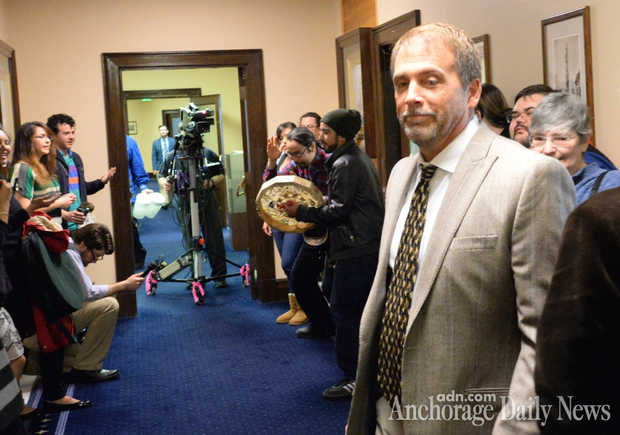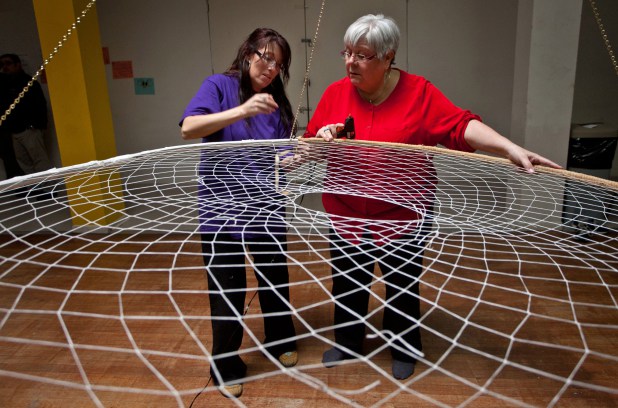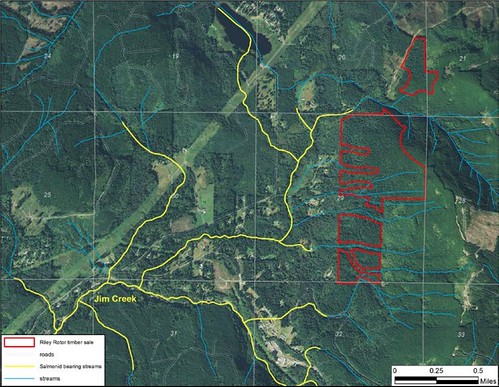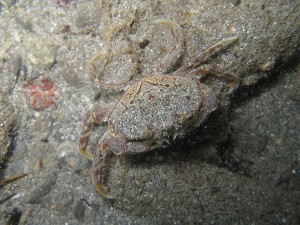
Members of the Washington State National Guard sort through debris south of the berm helping drain water from the mudslide site Friday morning.
By Rikki King and Eric Stevick, The Herald
EVERETT — President Barack Obama will visit the site of the Oso mudslide today, marking one month since the disaster that took at least 41 lives and destroyed a state highway.
The president will meet with victims’ families, survivors and first responders.
Much of those conversations will be private, though some may be able to catch a glimpse of Air Force One landing at Paine Field in Everett about 12:30 p.m.
Few other details were made public Monday about the president’s itinerary.
The confirmed death toll from the slide rose to 41 Monday, with two people still listed as missing. This weekend, Harborview Medical Center in Seattle released the last of its patients injured in the slide.
A local incident-management team is expected to take over command at the site again this week, another sign that the massive operation is shifting gears.
Highway 530 remains blocked. A flood warning is in place for the area east of the slide along the North Fork Stillaguamish River until Thursday afternoon.
The Secret Service began arriving in Arlington, Darrington and Oso weeks ago after Obama’s visit was announced. Military aircraft could be seen flying in Marysville and Arlington over the weekend as the president’s visit approached.
The day will mark Obama’s second visit to Snohomish County while serving as president. He last was here on Feb. 17, 2012, when he toured The Boeing Co. plant in Everett and spoke to factory workers.
That year was the first time in nearly two decades that a serving president visited the county.
Snohomish County Executive John Lovick said he is looking forward to speaking with Obama.
“To meet the president is just going to be beyond words for me,” Lovick said Monday.
Lovick was raised in Robeline, La., where the population now is just 179 people, he said.
“I never thought I would meet a city councilman let alone the president,” Lovick said.
Many local police officers and firefighters also are expected to play a role in today’s visit. They were unable to provide details, though, deferring questions to the White House.
The presidential visit two years ago cost local police and fire departments and county government more than $30,000. The expenditures included overtime staffing and fuel.
After visiting Snohomish County, Obama is scheduled to go to Asia, with stops in Japan, South Korea, the Philippines and Malaysia, according to the Associated Press.
Lives continue to be disrupted by the slide.
On Monday, the Federal Emergency Management Agency announced that assistance had been approved for people in the Arlington, Darrington and Oso areas whose commutes to work, school and medical appointments are detoured around the slide, through Skagit County. That will happen through individual FEMA assistance applications.
Businesses that need help should contact the Small Business Administration at www.sba.gov/disaster or 800-659-2955.
The Arlington School District has been sending a school bus to pick up students in Darrington, most of whom have opted to stay in the district for the rest of the school year.
Many students who live east of the slide are staying with family and friends in Arlington on school nights. At least two families have transferred students between the Arlington and Darrington school districts to avoid the lengthy detour, school officials said.
Also on Monday, two high-ranking prosecutors urged people to be aware of potential fraud related to the mudslide. Western Washington’s U.S. Attorney Jenny Durkan and Snohomish County Prosecutor Mark Roe warned people thinking about scamming mudslide victims or the government that they will face the full brunt of the law if they are caught.
“We will not be here to throw the book at you,” Roe said. “We will be here to throw the whole library.”
So far, there have been anecdotal reports of possible fraud, but no concrete evidence, Durkan said.
The prosecutors said fraud has been a common problem after other national disasters and they want to get in front of it in Oso.
The National Center for Disaster Fraud has documented many cases that resulted in prosecutions. In one instance, a woman was sentenced to three years in prison after falsely claiming she had a home in Mississippi that was destroyed when Hurricane Katrina hit in 2005. She also received temporary shelter from a charity where she stole the identities of hurricane victims and charged thousands of dollars on credit cards she took out in their names. “We will protect the victims and we will prosecute those that try to turn this tragedy into criminal profit,” Durkan said.
Among other tips, the prosecutors said people making donations should never be feel pressured to contribute and should never give personal or financial information to anyone who solicits money. They also referred anyone suspicious of fraud in relief efforts to contact the National Disaster Fraud Hotline at 866-720-5721 or by email at disaster@leo.gov.
Meanwhile, the Washington State Patrol continues to remind people that there is no public access to view the mudslide. The roadblocks are several miles away.
The Patrol continues to turn away as many as two dozen cars a day, trooper Keith Leary said.
“The area is not a tourist attraction, and the high level of respect for those who are still missing and their families is our priority,” Leary said.
















